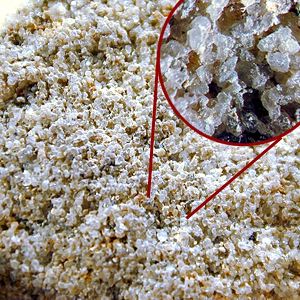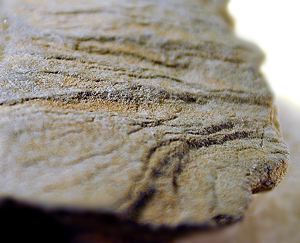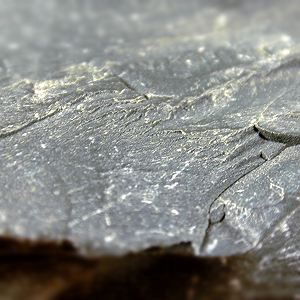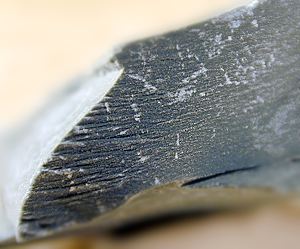The most important thing to know about sedimentation is that "it's a down hill process." Sedimentation" is the deposition of materials in an orderly fashion.
Stratification is the arrangement of sediment in distinct layers. As with most things studied in geology they are further subdivided by physical or chemical characteristics.
Multiple layers are referred to as bedding, a single layer is a bed, and the contact points are the bedding planes.
|
Starting Material |
Sedimentary Rock |
|
Gravel |
Conglomerate |
|
Sand |
Sandstone |
|
Silt |
Siltstone |
|
Clay |
Shale |
Loose fragments of rock or mineral that are broken down by mechanical (physical) processes are called detritus. It is also known as clastic sediment. Each individual particle is known as a clast.
These materials may be of any size. From boulders to microscopic clay particles. The table above shows the starting material and the resultant type of sedimentary rock they form.
The first two images to the left show classic sandstones. The close-up image reveals small rounded stones that appear to be glued together. The majority of the stones are transparent to translucent and are likely quartz. Quartz being very resistant to weathering. There may also be some feldspar in the material.
There is a natural process in which the various size grains are classified (separated) into similar size pieces. These then define some of the types of sediment and sedimentary rocks.
Sorting is the measure of the size RANGE of particles in sediment. If the range is narrow the sediment is termed "well sorted."
Sorting is a function of the speed of the transport medium. A fast moving river tends to move larger particles as well as smaller. There are natural places where additional sorting may happen, like a sharp bend in the river. Centrifugal force within fans the debris outward around the corner, and increase the separation by size.
Weight also plays a role in separation. Heavy materials like gold or platinum will sink rapidly and move less. Materials with similar specific gravity will be sorted by size rather than by weight, and hence quartz and feldspars are sorted in this manner.
Enrichment of one mineral over all others is a function of the minerals characteristics and strength. Basically is resistance to weathering. Since quartz is very high on this scale it is often the final survivor. It is "durable".
Particle shape can also be used to help identify some types of strata. There are two similar but different features. First there is "roundness", which describes the wear at a particles corners. If the particle has no sharp corners or crystal structure reaming it is said to be rounded. The overall shape may be thin and long, or it may be roughly equi-dimensional. Rounding is related to the fine structure of the particle and not the overall shape.
If a particle has become more spherical in shape, more equi-dimensional, then you are viewing its sphericity. Sphericity is the measure of the overall shape of the particle.
The farther a particle travels, the more rounded it will become.




| NEXT | TOC | PREV |